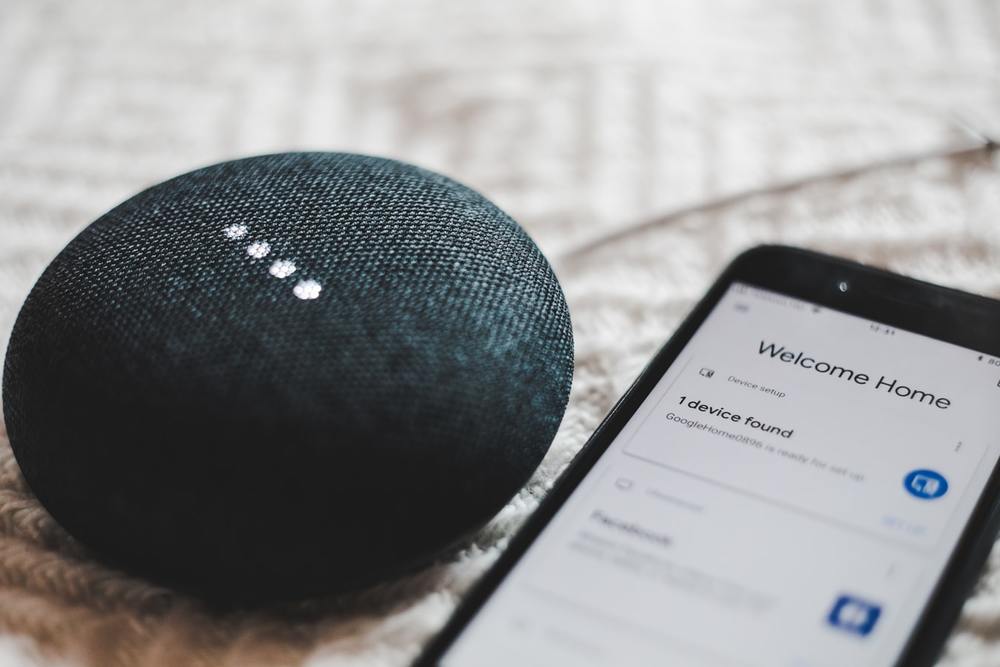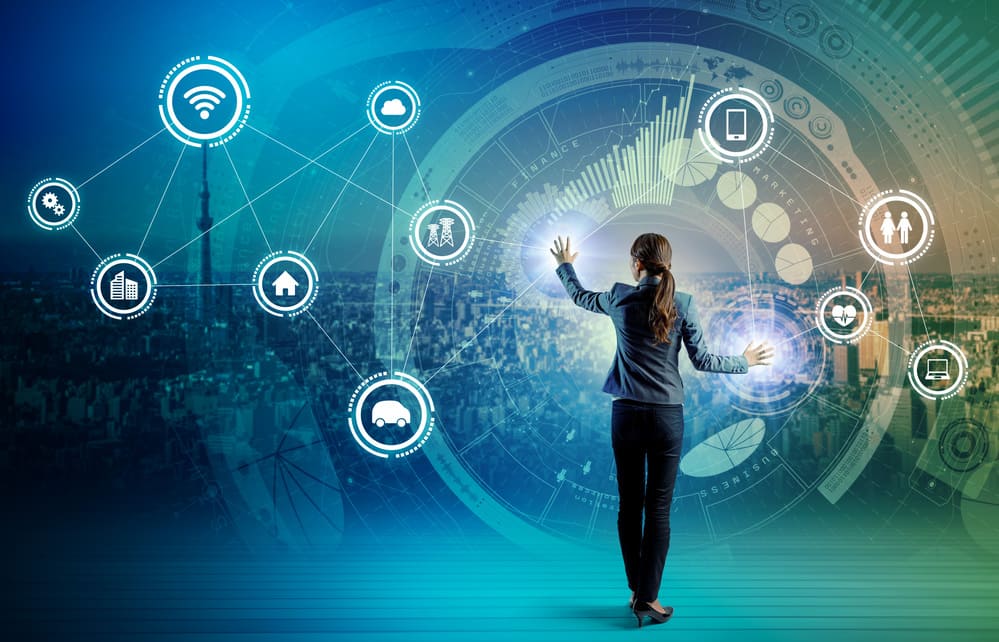The Fourth Industrial Revolution has set the stage for the emergence of smart cities – advanced urban infrastructure using data to enhance the quality of life for their citizens. While widespread adoption of smart city technologies still entails many challenges, the advent of 5G – the next-generation wireless networks – promises to accelerate their proliferation and take urban services to an entirely new level.
So how will the application of 5G technologies impact the world, and, most importantly, modern urbanism? Unlocking digital opportunities with 5G will help smart cities thrive in a number of ways.
In this article we will uncover the potential of 5G technology and provide several examples of how it is being used in smart cities, while extrapolating to the near future. Read on to learn more.
What is 5G technology and how does it work?
5G is the next generation of cellular network targeting to gradually replace 4G worldwide. Despite the fact that it is a technical evolution of 4G, not a revolution, it brings huge potential to revolutionize businesses.
5G has a number of advantages over 4G: it’s faster, has wider data bandwidth, and lower latency which will positively impact digital experiences from the performance of business applications to self-driving cars. Moreover, 5G will potentially eliminate most of the 4G connectivity issues, ensure wider coverage, and will be available in rural areas.
5G network uses higher number of currently unutilized frequencies which will increase the number of channels for data transfer. Based on cloud technology, such networks will be easy to manage, since they are software-defined and virtualized. The 5G technology also uses edge computing to process data faster.
Here are some of the 5G features that set it apart from 4G:
Higher speed
5G promises us greater Internet speed – the peak speed of 5G networks is 20 Gbps which is 20 times faster than the peak speed of 4G (1 Gbps only). This will remove a major roadblock towards the proliferation of Internet of Things and allow it to advance at a faster pace.
Reduced latency
5G technology will also reduce latency (the response time between the command and the server) to as low as 1 millisecond (ms), down from about 50 ms on 4G, enabling greater remote management capability for mission-critical services like power plant management that rely on this instantaneous communication.
Scientists are aiming to achieve this by launching Low Earth Orbit satellites (LEOs) that will help increase the velocity of transmission.

Wider bandwidth
Not only will 5G provide high-speed Internet connection, it will also offer increased screen resolutions and higher bandwidth, which will measurably improve the Internet experience. This feature supports the trend to use Mobile routers for IPTV at home and on the go. Streaming for video and other high intensive data becomes no issue.
Uniform platform
5G will also create a uniform platform for all devices and networks – allowing more users to use the network simultaneously and exchange data. Moreover, 5G will intelligently detect which type of device is being connected, and work differently. Connectivity will be uninterrupted and more consistent, and the network will grant access to more services.
Larger number of connected devices
5G will have the capacity for a larger number of connected devices. Since they will be capable of utilizing different frequencies, there will be less interference, and the wide array of connected “things” will function more effectively.
Extended battery life
Along with better performance, 5G will also reduce battery consumption and ensure longer operation time for all connected devices.
Powering a smart city with 5G
The outstanding features described above will be particularly important for the seamless operation of connected IoT devices and vehicles. With 5G, the urban revolution moves from a theoretical to a practical realm, as the larger data sets, faster processing speed and zero latency create a ground smart cities can thrive on.
Let’s now examine the 5G opportunities and what they bring to smart cities more specifically.
1. Digital inclusion
Advanced 5G capabilities will bring increased digital inclusion to urban residents who still lack access to high-speed broadband Internet. Moreover, the choice of Internet providers will be much wider than today, and the price will be affordable to everyone. With 5G more people from all walks of life will have access to smart city services which will be always connected, always “on”.

2. Enhanced security
The application of 5G technology will make possible the instantaneous transfer of videos from the security cameras installed across the city to the authorities, enabling them to immediately take action when needed. Increased connection speed will accelerate video processing – for example, pulling out specific info from videos, such as gunshot, theft and violence detection. Making informed decisions will become faster and easier than ever.
3. Improved emergency response
5G could also account for instant response to emergency situations. For example, an automated alert from a security camera can dispatch an emergency crew to eliminate the potentially hazardous situation. 5G will also provide citizens with more ways to contact emergency personnel and actually help prevent crimes or accidents before they happen by leveraging predictive analytics.
4. Solving traffic and transportation problems
Zero latency brought by 5G will enable the sensors and devices that power the city’s transportation and traffic system to work seamlessly, automatically redirect traffic and alert self-driving vehicle systems about the current situation on the road. The cars will alert each other about their location to eliminate collisions and avoid traffic jams.
The city streets will thus become safer for both drivers and pedestrians. For instance, your 5G phone could alert you of cars and bikes in the vicinity as you walk the city streets, and help you avoid accidents.
5. Making our homes cleaner, safer, and more energy-efficient
Given the anticipated 5G impact on IoT, we are just a few steps away from smart homes. From automated grocery purchase and delivery to complex management of a building’s infrastructure, 5G will enable us to adopt new standards of living.
In practical terms, it would mean safer, and more energy efficient homes, and a cleaner, healthier domestic environment. The increase number of frequencies will allow more IoT devices to permeate our homes and work efficiently without interfering with each other.

6. Paving the way towards personalized healthcare
A lot of people today own wearable fitness bracelets; with 5G these devices have full potential to evolve into portable health monitoring stations. There will no longer be any need to visit a doctors’ office to pass medical tests: physicians will be alerted of a patient’s changing condition instantaneously and enabled to immediately tweak medication regimens or change therapy schemes.
Centralized access to a citizen’s medical records could be instantly granted to a healthcare professional. In essence, 5G is removing all obstacles that are currently hindering the advent of personalized healthcare.
7. Advanced city infrastructure management
Ultimately, the impact of 5G will enhance connectivity between every facet of a smart city infrastructure – from energy management to managing smart buildings, and enable the city authorities to instantly redirect their efforts into spheres that need their attention.
In the nearest future, smart sensors pervading the environment will collect data on just about every aspect of urban life like weather, air pollution levels, and traffic situation in real-time. By partnering with local businesses, educational establishments, and initiative groups, the city administration could work on ways to ensure environmental sustainability based on the most current data.
What cities need to do to prepare for 5G
How will 5G impact the world? In less than a year, based on real-life 5G use-cases, we will know more about the impact of 5G technology on our daily lives and urbanization. For now, to fully benefit from 5G opportunities, cities need to evaluate their potential and take action.

This is easier said than done, though. 5G networks are resource intensive.
Below are some of the challenges that go hand in hand with embracing 5G.
Enhanced network infrastructure
A healthy 5G ecosystem will require a reliable infrastructure ready to handle the enormous traffic volumes and large data sets. Unfortunately, updating mobile network infrastructures is not a priority in most urban communities plagued with issues like traffic and high crime rates.
Robust security system
5G will dramatically increase the amount of sensitive data, and the interconnected IoT devices will represent a vast attack surface for hackers. Most cities, however, still use legacy security systems unable to handle the challenges brought forth by 5G. Replacing these systems will obviously require time and investment. For now, rightful security concerns stall 5G adoption in many urban areas.
Access to pools of tech talent
Hiring experts to develop and implement smart city innovations is yet another challenge. In developed countries, such specialists are rare. Moreover, they usually command huge salaries and will need powerful incentives to work on community projects.
How to prepare for a successful 5G adoption
5G is set to launch in 2020, and although its worldwide adoption would surely take time, urban communities can undertake a range of measures to prepare for a successful transformation into smart cities.
Invest into hardware and infrastructure developments
To fully unlock the opportunities of 5G, smart cities will have to allocate costs to revamp and enhance their existing infrastructures. The funds can be raised, in part, by partnering with local businesses, government grants or via crowdfunding.

Replace outdated security systems
The advent of 5G technology will require cities to raise the standards for IT security and data protection. Advanced security systems of today are based on analytics and big data: not only are they capable of eliminating known threats, they are also able to detect any non-typical activity and thus crush an attack attempt in the bud.
Launch educational initiatives to foster local talent
The 4th Industrial Revolution is expected to create almost as many jobs as it will render obsolete. Local city administrations will have to undergo a transition period where the shortage of talent and skills needed to operate 5G powered systems will be inevitable. To bridge the skills gap, cities will have to come up with creative ways to grow and foster local talent. Attracting young data scientists and analysts while they are still in college or re-educating existing specialists is an actionable solution. It will surely take time, though.
Obviously, preparing a city for 5G will require cooperation between local government, business, investors, and citizens. The road towards a full-fledged 5G ecosystem starts with pinpointing areas that need improvement and are most likely to benefit from 5G applications, and outlining a strategy for further action.
Because they are, for the most part, irreversible, smart city innovations need careful evaluation. At Eastern Peak we have created a virtual sandbox to test- drive smart city initiatives and estimate their potential effect. Not sure yet which step should be your first towards a 5G powered city? Talk to our experts now to develop an action plan.
Read also:



